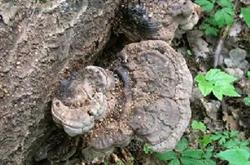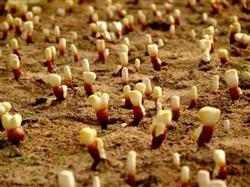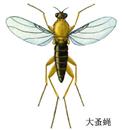Ganoderma lucidum planting technology: how to control penicilliosis by planting Ganoderma lucidum?

How to control penicilliosis by planting Ganoderma lucidum? Please introduce the method that penicilliosis of Ganoderma lucidum is common in the cultivation of edible fungi. It is an important disease on the sesame bed of edible fungi such as Ganoderma lucidum, and it often occurs in the stage of fruiting body formation. When the symptoms are harvested, the sesame root left on the cultivation bed is easy to catch the disease, and gradually infects the health near the disease body after the disease. Generally, it invades from the base of the stalk of healthy Ganoderma lucidum, and then occurs yellowish brown rot, and expands upward from the base. Affect the yield and edible value of the fruiting body. The pathogen of the disease belongs to fungal disease, and Penicilliunsp., is a subphylum of half-known bacteria. The conidiophores are broomlike branches, and the tip of the last layer of conidiophores is thin, bottle-pedicel-shaped, and there are conidia on it. The conidia are nearly round, colorless, single-celled, about 3 microns in diameter and can only be seen and cleared under a 400-fold high-power microscope. When growing on potato sucrose Agar medium, the initial hyphae were white, slender, flat on the surface of the substrate, slightly powdery, and when a large number of conidia were formed, the color of the colony gradually changed from white to green or blue. The pathogen is a weakly parasitic fungus, which lives on a variety of organic matter. after forming a large number of conidia, it can be transmitted through airflow, and hyphae will be produced on organic matter when the temperature and humidity are suitable. The pathogen likes acidity, and the conditions of acidic culture medium and low water content are beneficial to the growth and spread of the pathogen. During the period of Ganoderma lucidum, when the moisture content of the culture material is too low, the air relative humidity is too low, the growth of young Ganoderma lucidum is weak, and the residual sesame root on the sesame bed is not removed in time, it is beneficial to the occurrence of the disease. Control methods (1) after harvest, clean up the cultivation place in time, remove the thin young Ganoderma lucidum and residual sesame root, and reduce the occurrence of bacteria. (2) strengthen the cultivation management and spray water on the ground of the cultivation room during the formation of Zhi Lei and Zhi Gai to keep it moist and ventilated at the right time. (3) the mycelial growth of the pathogen can be inhibited by reasonably adjusting the pH of the culture medium and controlling the neutral to weakly alkaline reaction of the culture medium. The pH of the culture material can be adjusted with lime, 1% lime can be added when mixing the material, and 2% lime water solution can be sprayed once after picking the first tide of mushrooms. (4) after the attack of chemical control, 25% carbendazim of 500 times of carbendazim or 800 times of thiophanate of 70% methyl can be sprayed on the mushroom bed. Commonly used agents carbendazim, methyl topiramate. Click to get more planting techniques of Ganoderma lucidum
- Prev

Ganoderma lucidum cultivation technology: how to cultivate ganoderma lucidum?
How does Ganoderma lucidum grow? The artificial cultivation of Ganoderma lucidum in China began in 1960 and was successfully domesticated by Mr. Chen Meipeng, Institute of Edible Fungi, Shanghai City Academy of Agricultural Sciences. Ganoderma lucidum cultivation has two kinds: substitute cultivation and log cultivation. Substitute cultivation is to use artificial preparation of culture materials bagged, stacked in the shed culture...
- Next

Ganoderma lucidum planting technology: how to control flea flies by planting Ganoderma lucidum?
How to control flea flies by planting Ganoderma lucidum? Please introduce Ganoderma lucidum big flea fly synonym common flea fly, Walsin flea fly. It belongs to Diptera, Muscidae. 1. The adult is active in shape and habit, black to dark brown, 2-3 mm in length, short antennae and Awned. The protuberance of middle chest dorsal plate is higher. Larvae maggot-shaped, yellowish.
Related
- Fuxing push coffee new agricultural production and marketing class: lack of small-scale processing plants
- Jujube rice field leisure farm deep ploughing Yilan for five years to create a space for organic food and play
- Nongyu Farm-A trial of organic papaya for brave women with advanced technology
- Four points for attention in the prevention and control of diseases and insect pests of edible fungi
- How to add nutrient solution to Edible Fungi
- Is there any good way to control edible fungus mites?
- Open Inoculation Technology of Edible Fungi
- Is there any clever way to use fertilizer for edible fungus in winter?
- What agents are used to kill the pathogens of edible fungi in the mushroom shed?
- Rapid drying of Edible Fungi

